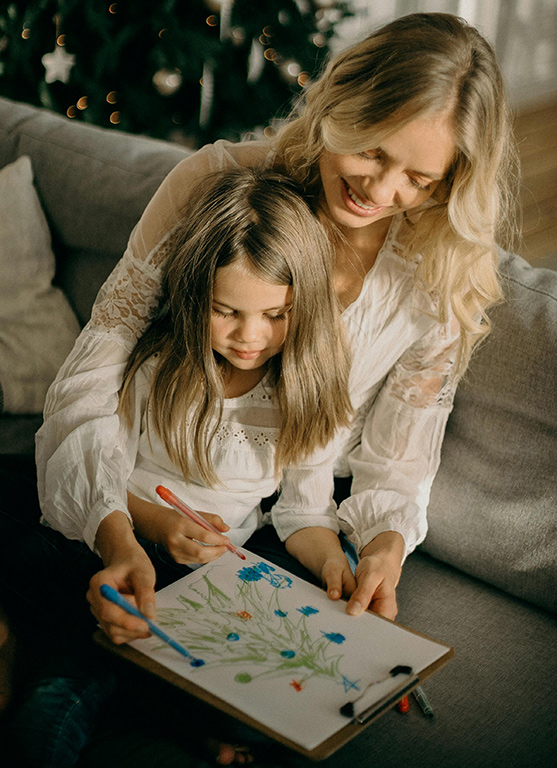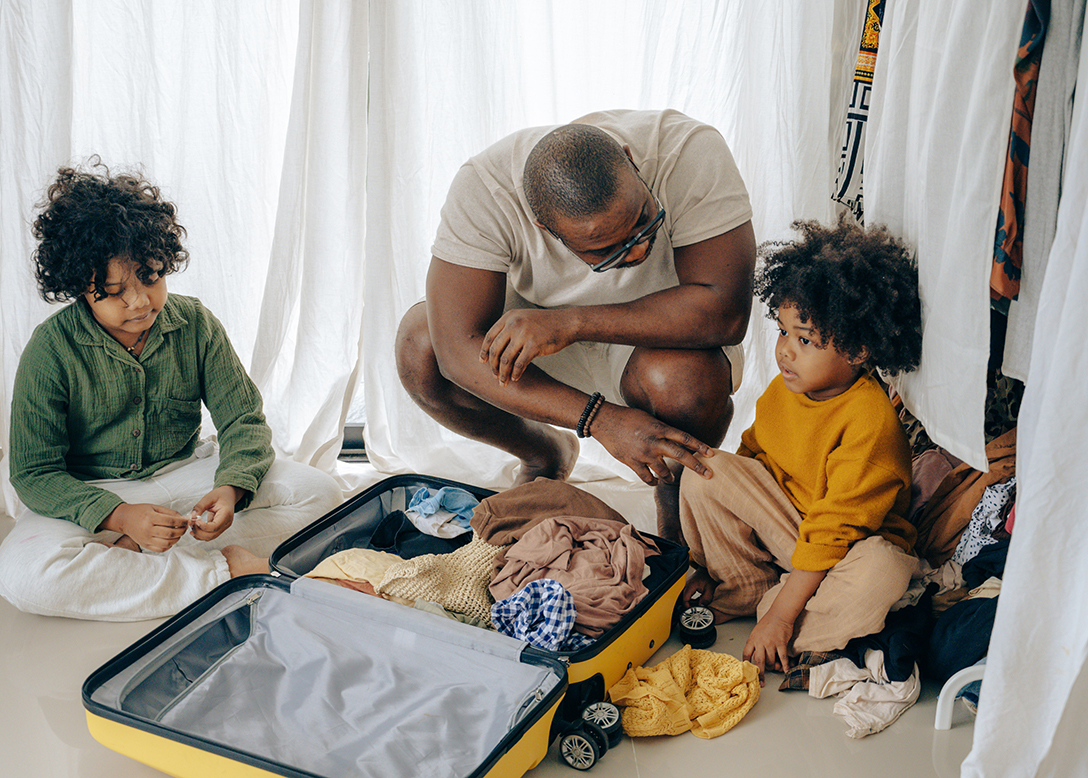by Cady Andersson
If caring for children hasn’t made you uncomfortable yet, now things are going to get tricky.
I am going to advise you never to force a child to say “I’m sorry” when the child isn’t actually feeling remorse. What good is an apology that isn’t genuine?
Children have come to see that five-letter word as a “get out of jail free” card. They took something of their sibling’s? “Sorry!” They broke your car window? “Sorry!” They colored on your huge work assignment the day before you need to turn it in to your boss and now you have to go to the printer’s again to have it reprinted because “the dog ate my homework” doesn’t work past a certain age? “Sorry!”

This little word can have a huge impact when paired with appropriate feeling. If remorse isn’t truly motivating the word, then life becomes one huge game of “Sorry!” Remember that board game where everyone is intentionally frustrating one another and seeking revenge, all the while cheerfully singing out “Sorry!” with an irritating smile and not one single solitary shred of regret?
If a child in your life is a little “sorry” parrot, saying it on repeat without changing behavior, then it is time for a shift in philosophy.
Sit the children down and tell them that you (or you and your partner or you and their parents or you and the school principal) have noticed the family, or class, or group is saying the word “sorry” a lot without actually meaning it. Tell them that, as a group, we are no longer going to say we are “sorry” – or be forced to say we are sorry – without actually feeling sorry.
“Great. How are we supposed to teach, and guide, and lead children to be kind and compassionate human beings without making them apologize?”
The first way you can do this is through teaching your children to make amends.
You can mention making amends at the meeting or you can model this. I suggest doing both. When a child is injured because another child threw something without looking – instead of saying “I’m sorry” – have the other child come face-to-face with the injured child. Prompt them to say “Are you okay?” The other child will likely say or indicate that they are not. Prompt the child who threw the item to say “Can I help you?” Often the injured child will accept this offer. Prompt the child to ask “How can I help you feel better?” Once the injured child responds with a suggestion, you can ask the other child to help with whatever the suggestion is – getting a glass of water, a tissue, a hug, etc. Then congratulate the child who helped the other one and proceed with a guidance talk about how we can safely throw the item next time.
Did you notice that no one had to apologize in the scenario and yet amends were made? If the injured child wants amends to be made in some way that is unsafe, you can simply say “You know, that is actually not safe. Is there something else that might make you feel better?” If the child asks for a hug and the other child is not willing – do not force the children to hug. This confuses messages about body autonomy and puts children at risk for sexual assault if habitually forced to ignore their own comfort levels and allow another person to touch their body. This goes double for when the person the child is being forced to hug or kiss is an adult. When the injured child asks for a hug, you can ask the other child “Jalen wants a hug. Is that okay with you?” The child will begin to understand that they do not need to use their body to make someone feel better in a way that makes them uncomfortable.
“What if the child refuses to make amends?”
In all of my time teaching and working with children I have never encountered a child who did not wish to make amends in some way when faced with another person’s sadness or pain. And guess what? If the child does not want to make amends (or is wrestling with guilt and thus immobilized) you can help the child by modeling and being a part of the process. “Serena wants an ice pack. Can you get her an icepack from the freezer?” If the child refuses or hesitates, calmly and kindly say “Come on, we can go together to get her an icepack. She will feel so much better when we give this to her!”
Many children fear they are about to get in trouble when an adult intervenes (surprise! surprise!). Soon your children will begin to see your new tactics, appreciate, and replicate them. Some of you are out there singing some Carole King “It’s too late, now it’s too late. Though we really did try to make it.” If your child is still singing their endless, empty sorries, try using this in response, “The greatest apology is changed behavior,” or the ever effective, “I don’t want you to apologize. I want you to change your behavior.” It may take a few repetitions. Eventually the child will comprehend the idea. As my best friend pointed out when reading this piece, you also may wish to say this to every person you’ve ever dated. Also effective. Go for it. Live a radical life and ask for a behavior change instead of lip service.
What if the child wants to apologize because they are truly feeling sorry?
During your team meeting discuss a proper apology method. Effective apologies contain four parts:
- First, you must state what you are sorry for. “I am sorry I cut your doll’s hair.”
- Next you must state why it wasn’t appropriate. “It is not my doll and it wasn’t okay for me to decide she needed a haircut.”
- Then you must tell the other person what you will do differently next time. “Next time I feel like cutting your doll’s hair, I will ask first or use my own doll or use my scissors to cut paper instead.”
- Finally, you ask for forgiveness. “Will you please forgive me?” If the person is not ready to forgive you yet, a simple “I understand that you are not ready – I hope you can forgive me soon” can follow.
An appropriate and thoughtful apology goes a long way to heal a hurt. When you teach children about a complete apology, be sure to tell them that they won’t be forced to apologize. If they do want to apologize, this is the format you will be using as a group going forward.
This method is important because it helps the person apologizing take ownership for the action that caused the remorse, and it helps the person realize what they could have done differently in order to avoid the hurt that happened. I recommend using this apology method with adults in your life as well, whether with a romantic partner, friend, sibling, parent, boss, co-worker, or stranger. It works. I mean, it really works. There is nothing quite like a well thought out, comprehensive apology.
If you think it is too late to apologize about something, reconsider. It is never too late to ask for forgiveness. It is never too late to tell someone you wronged that you know you wronged them and you are sorry. Apologies are powerful when they are genuine.
Word to the wise: Make sure you and your children do not add any extra steps to this process, such as defending yourself or blaming the other person for your behavior. That’s not a real apology. Real apologies have nothing to do with the other person causing your behavior.
You can offer an explanation of your emotional state if you wish. “I am sorry I cut your doll’s hair. It is not my doll and it wasn’t okay for me to decide she needed a haircut. I was feeling jealous that I didn’t have a doll with such beautiful hair. Next time I feel like cutting your doll’s hair, I will ask first, or go get my own doll, or use my scissors to cut paper instead. Will you please forgive me?” Then you can offer to make amends. An example of appropriate amends may look like the following: “I would like to give you some of my allowance to help you buy yourself a new doll, if you want, or maybe a special doll hat to help cover the spot where I cut her hair.”
During this process, remember that we are responsible for our own feelings.
Our feelings and our behaviors are totally within our jurisdiction. Other people’s behaviors and feelings are not. You cannot make me feel anything that I do not already fear or believe about myself. For example, if you tell me I am lazy, there will be zero emotional reactions from me. I won’t be angry or hurt. Why? Because I am certain I am not lazy. If you tell me I am an unavailable friend because I spend too much time at work? Possibly instant tears. What is the difference? One I don’t believe to be true about myself, and one I am afraid is true about myself.
Why am I telling you this? Because the person you are apologizing to is not responsible for how you are feeling. You are. So “I’m sorry I keyed your car. I was feeling hurt because you WHATEVER-ed me” is not a permissible expression of your feelings. You can say, “I’m sorry I keyed your car. I was feeling hurt and in need of attention. I asked for that attention in the wrong way. It was totally inappropriate and disrespectful to damage your property like that. I would like to pay for the damage I caused. Next time I am feeling hurt and needing attention, I will come to you and tell you how I am feeling or talk with a close friend or therapist. I hope you can forgive me.”
Apologizing is powerful (when we mean it). Making amends is a different skill altogether. Doing both is one of the most powerful relationship protectors of all time. Give children this skill. Use this skill with the children in your lives and with other adults. You will find that there is great power and dignity to be had when we admit our wrongs.


